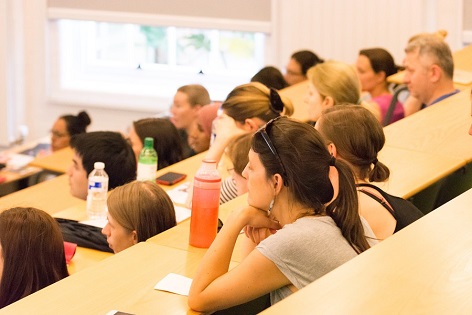DATE: 26 March 2018
TIME: 9.30-16.00
LOCATION: Venue Details 4 Redlands Road, Reading, RG1 5EX, London Road Campus, L22, Room 113

Course Instructor: Dr Lars-Erik Malmberg (University of Cambridge)
This workshop is an introduction to Structural Equation Modelling. The workshop will run over 2 days from 9.30 to 4pm. Below is a description of the content for each day.
Course content
9.30am to 4pm
Day 1
The concept of a latent construct is central in the social sciences. A latent construct is a non-directly observed phenomenon (e.g., attitude, socioeconomic status) that we can model using manifest (observed) variables (e.g., survey and questionnaire responses, observation scores), by partitioning out residual (i.e., uniqueness, error variance). The structural equation model (SEM) is divided into two parts. In the measurement part of the model, we can inspect whether manifest variables measure the constructs they are intended to measure. This model is called confirmatory factor analysis (CFA) which allows the researcher to test whether an a priori model fits data, and whether this also holds across multiple groups. If measurement is satisfactory, the relationships between constructs can be estimated in the structural part of the SEM. Complex relationships between manifest variables and/or latent constructs can be tested in path-models not possible to specify in the multiple regression framework. In the afternoon there will be time for participants to work on their own data.
9.30am to 4pm
Day 2
The second day we focus on SEM for longitudinal data. Prospective longitudinal data is usually collected over longer periods of time (e.g., terms or years). We can model both manifest and latent constructs over time, but for latent constructs we can test if our measures capture the same phenomenon over time (i.e., measurement invariance).
Using SEM we can model repeated latent constructs over time using autoregressive models (i.e., a construct at the concurrent time-point is regressed on a construct at a previous time-point), and investigate reciprocal effects between constructs over time (i.e., lagged and cross-lagged effects). We can also specify latent change models using “phantom constructs”. When particular interest is in individual differences in change over time, we can model time explicitly in the latent growth curve model. In the afternoon there will be time for participants to work on their own data.
Pre-requirements
Participants need to understand the basics of multiple regression analysis.
Teaching context and preparation
Participants are asked to bring their own laptops. Prior to the course please download and install the Mplus demo-version, and R Lavaan freeware. In order to promote interactive learning, we will restrict the number of participants to 20.
Course costs
Standard rate (Participants from outside the UoR)
£120 per person per day, £240 for two days
Cost
£240.00
Concessions (Staff and students from the UoR)
Cost
£50.00 per person for two days
Please go to our Conference and Events pages for registration.


